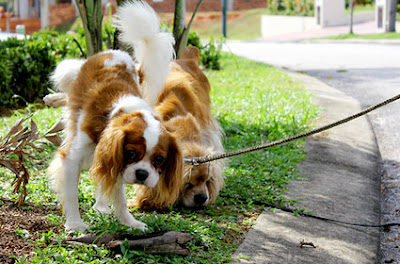5 Tips to potty-train your puppy
Until puppies are born house-trained, you'll have to start putting your potty training plan to work as soon as the little one comes into your home. Successful house-training requires setting up a potty schedule, limiting a puppy's roaming options to areas you can supervise, showing your pup the area you want him to use and praising him for going there. Even with a positive approach, people make mistakes that delay the process. Here are a few key rules to remember:
 |
5 Tips to potty-train your puppy |
1. Limit Your Puppy's Wanderings
Use pens and baby gates to keep your pup where you can keep an eye on him. That way, if you see him start to make a mistake, you can whisk him outside and praise him for finishing the job in a pre-selected spot. When you can't supervise, your puppy should be in a crate.
2. Understand Your Puppy's Physical Limitations
Little puppies have limited storage capability and need to be taken out frequently. A general guideline: A puppy can hold it as long as his age in months. Thus, a four-month-old puppy is good for up to four hours, at the outside limit.
3. Remember That Puppies Function Like People
Puppies need to relieve themselves after they wake up, after they eat or drink and after playing. Make sure to take your puppy out at these times. Offer food and water at scheduled intervals to help predict when your pup will need a trip outside.
4. Clean Up Mistakes Thoroughly
A puppy can still smell even what you can't see, and smells invite repeat business. Keep commercial products on hand that use enzyme action to break down the smell. White vinegar also does a great job of neutralizing the odor of urine. Don't use an ammonia-based product, though: To a pet, ammonia smells like one of the components in urine.
5. Be Patient and Consistent
While some puppies seem to house-train themselves, others are slower to learn. If you don't seem to be making progress, ask your veterinarian for a referral to a trainer or behaviorist who can help.
Tags:
Dogs
